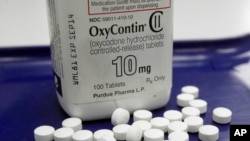oldfart
Older than dirt
Checking on you, Huggy ...
Have you got a workable management plan, yet?
My mom's new issue is apparently a manufacturing hiccup with her Avinza. Thankfully, just an inconvenience and not more serious. She has to drive 20 minutes further to fill that Rx. Expected to be resolved next month.
In a word, yes.
My general provider, whom I had already established a high value of trust and a great relationship with, has taken over responsibility for all of the pain management issues I have been dealing with. He has been absolutely good for his words and has made me work less than the specialist to prove I am capable of much of the responsibility to not abuse the prescribed medications. At this time I am getting three scripts at a time that last three months. My daily med intake for chronic pain is 90 mg of morphine spread out evenly over 24 hours. I also have an emergency back up script of Oxycodone 5mg which I can take as needed when I have unusual discomfort that breaks past the morphine.
I am living better in the last 6 months than I have for several years. For some unexplained reason the tolerance to the morphine hasn't really been a problem. It is still just about as effective as it was when I started it back in January. Maybe when you take into account that I am much more active than before when I couldn't move very well it is just possible that the over all pain is less. For whatever reason I am grateful of the benefits of the meds and my life is much improved.
To any lucky enough to get into a quality pain specialty clinic or have a provider that gives a damn and wants to take responsibility to prescribe pain medications I do have this one piece of advice. From my experience with methadone as the starter drug in the specialty clinic I would suggest that you attempt to get morphine instead. It is much easier and safer to regulate dosage. Comparing the methadone in it's drop off effects or my body's tolerance to it the methadone was about maybe 25% as effective after 6 months. I can't say for sure but There HAS to be SOME loss of effect of the morphine but I'll guess it couldn't be more than 25%.
So thanks for checking in on me. I hope your mom has Drs that care as much as mine do.
Sean
Glad to hear you are doing better. Wish you all the best. Chronic pain sucks, and staying on the program (especially the at home exercises on your own) can be a drag.


